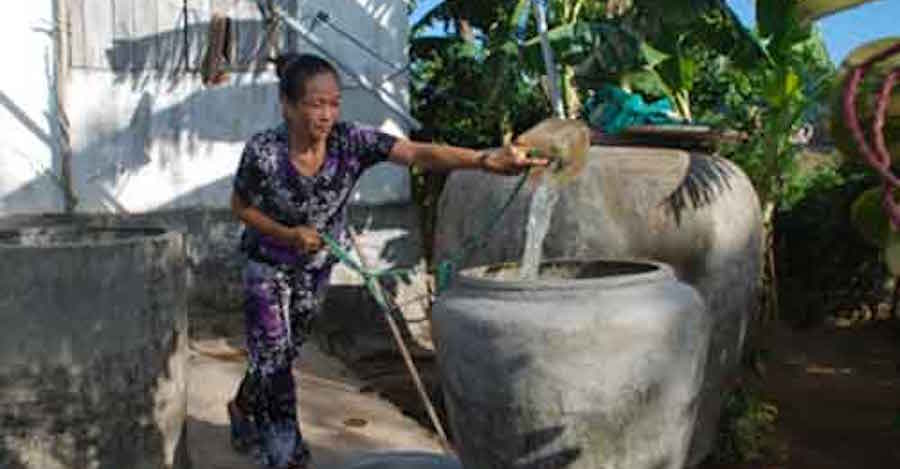Coffee has helped lift farmers on the Bolaven Plateau and others out of poverty, but extreme weather threatens output
Tag: el nino
Is Vietnam in for Another Devastating Drought?
Right now in coastal provinces around the Delta, thousands of farmers, especially those who miserably suffered during last year’s historic drought, are mobilizing to prepare for another similarly devastating drought, which is expected to arrive in the Delta in a few weeks.
Mekong Delta 2016: historic drought, saline intrusion destroys crops
In the first months of 2016, when the north saw record spells of cold, the central and southern regions suffered a historic drought and saline intrusion caused by El Nino.
Vietnam Warns of Dire Impact From Planned Mekong Dams
Research commissioned by Vietnam has warned of devastating environmental and economic effects for millions of people living along the Mekong River if 11 proposed dams are built on its mainstream.
Vietnam’s Mekong Delta hit by worst drought in years
THE southern tip of Mekong Delta in Vietnam in the country’s prime fertile rice-growing region has been hit by the worst drought the country has seen in recent years.
Accompanied by a saline intrusion, the drought is reported to have affected over a million people who face water shortages in the region.
This has spurred China to dispense twice the amount of water from a hydropower station to aid the situation.
Officials blamed the drought on the El Nino weather phenomenon and excessive construction of hydropower dams on the upper stream of the river, the Associated Press reported.
Yesterday, director of the department at the Ministry of Agriculture and Rural Development Ma Quang Trung was quoted as saying the level of inland saline intrusion was unprecedented, resulting in damage to some 180,000 hectares (444,780 acres) of paddy fields.
Groundwater shortage could jeopardise 1.5 million farmers: study
Amid late-arriving rains and increasingly unpredictable weather patterns, groundwater supplies are shrinking, a fact that could leave 1.5 million Cambodian farmers unable to water their crops within 15 years, according to a study published last month in the Journal of Hydrology.
The study by Laura Erban and Steven Gorelick of the department of earth system science at Stanford University found that a growing reliance on groundwater use – which has grown by 10 per cent annually in recent years – may drop the water table below the “lift limit” of suction pump wells.
“Extensive groundwater irrigation jeopardises access for shallow domestic water supply wells, raises the costs of pumping for all groundwater users, and may exacerbate arsenic contamination and land subsidence that are already widespread hazards in the region,” the study authors wrote.
Even if the Kingdom starts drawing more irrigation water from rivers and lakes, its options are limited, the study found.
Saltwater Advances in the Mekong Delta
This week that the Mekong Delta, Vietnam’s main rice growing region, is being gradually contaminated by salt water moving inland due to the ongoing drought, which in turn is caused mainly by El Nino. Already, 200 000 tons of rice have been damaged. Relief will come with the end of El Nino, which should bring more freshwater to the delta.








